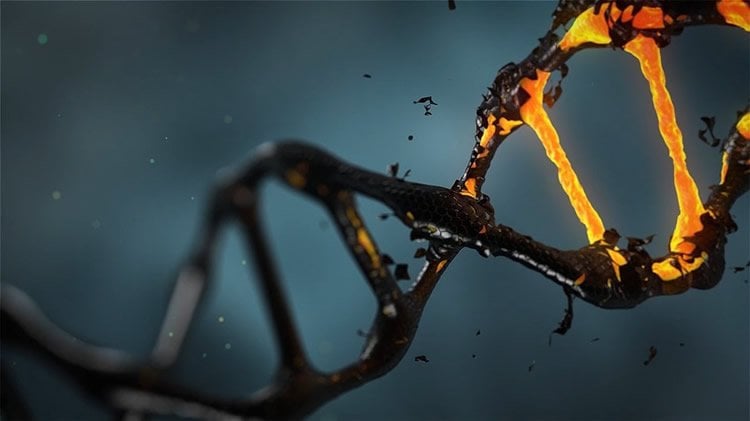Summary: A new study reports researchers have discovered the mechanism behind how a single gene mutation can cause dystonia.
Source: University of Liverpool.
Researchers at the University of Liverpool have identified the basis for how a single gene mutation can cause a rare neurological movement disorder known as dystonia.
Dystonia can result from an injury or can be an inherited disorder in which patients progressively develop from childhood uncontrollable muscle contractions leading to repetitive movements and awkward and painful postures. The disorder can affect one muscle, a muscle group, or the entire body.
It is estimated to affect at least 70,000 people in the UK. There are a large number of different types of dystonia which affect people in widely differing ways.
Symptoms of dystonia can range from very mild to severe. Dystonia can affect different body parts, and often the symptoms of dystonia progress through stages. Some early symptoms include: a ‘dragging leg’, cramping of the foot, involuntary pulling of the neck, uncontrollable blinking and speech difficulties. Usually there are no other neurological abnormalities.
There’s no cure for dystonia, but the condition can usually be effectively managed.
Characterised
Researchers from the University’s Institutes of Translational Medicine (ITM) and Integrative Biology (IIB), led by Dr Nordine Helassa, identified mutations in the gene encoding a protein known as hippocalcin as one cause of the disorder.
The effect of these mutations on the physiological role of hippocalcin or how this would impact on the nervous system had not been understood.
Hippocalcin is a member a family of proteins involved in signalling in the nervous system that have been extensively studied in Professor Bob Burgoyne’s group in ITM for the last 20 years.
As a result of their research, which has been published in the journal Human Molecular Genetics, the effect of the disease-causing mutations in hippocalcin on its physiological function have now been characterised.
Overactivation
These mutations do not affect the expression or the structure of the protein but lead to subtle defects in how it controls signalling in neurons.

In the course of the study it was found that hippocalcin can interact with specific types of calcium channels that are important for the normal initiation of neuronal activity and that expression of the disease-causing mutations resulted in overactivation of one particular class of these channels.
Dr Nordine Helassa said: “We can now understand for the first time how these mutations would have important physiological consequences that would lead to abnormalities in neuronal function. Excessive neuronal activation that could result in aberrant signalling in the brain of affected individuals.”
Potential new treatment
Professor Burgoyne added: “These findings provide a clue towards the development of a potential new treatment as it is possible that use of drugs that inhibit the key calcium channels regulated by hippocalcin could help reduce the impact of the inherited disorder.”
Source: Simon Wood – University of Liverpool
Image Source: NeuroscienceNews.com image is in the public domain.
Original Research: Abstract for “Biophysical and functional characterization of hippocalcin mutants responsible for human dystonia” by Nordine Helassa, Svetlana V. Antonyuk, Lu-Yun Lian, Lee P. Haynes, and Robert D. Burgoyne in Human Molecular Genetics. Published online April 7 2017 doi:10.1093/hmg/ddx133
[cbtabs][cbtab title=”MLA”]University of Liverpool “Cause of Dystonia Identified.” NeuroscienceNews. NeuroscienceNews, 10 April 2017.
<https://neurosciencenews.com/dystonia-genetics-6372/>.[/cbtab][cbtab title=”APA”]University of Liverpool (2017, April 10). Cause of Dystonia Identified. NeuroscienceNew. Retrieved April 10, 2017 from https://neurosciencenews.com/dystonia-genetics-6372/[/cbtab][cbtab title=”Chicago”]University of Liverpool “Cause of Dystonia Identified.” https://neurosciencenews.com/dystonia-genetics-6372/ (accessed April 10, 2017).[/cbtab][/cbtabs]
Abstract
Biophysical and functional characterization of hippocalcin mutants responsible for human dystonia
Dystonia is a neurological movement disorder that forces the body into twisting, repetitive movements or sometimes painful abnormal postures. With the advent of next-generation sequencing technologies, the homozygous mutations T71N and A190T in the neuronal calcium sensor (NCS) hippocalcin were identified as the genetic cause of primary isolated dystonia (DYT2 dystonia). However, the effect of these mutations on the physiological role of hippocalcin has not yet been elucidated. Using a multidisciplinary approach, we demonstrated that hippocalcin oligomerises in a calcium-dependent manner and binds to voltage-gated calcium channels. Mutations T71N and A190T in hippocalcin did not affect stability, calcium-binding affinity or translocation to cellular membranes (Ca2+/myristoyl switch). We obtained the first crystal structure of hippocalcin and alignment with other NCS proteins showed significant variability in the orientation of the C-terminal part of the molecule, the region expected to be important for target binding. We demonstrated that the disease-causing mutations did not affect the structure of the protein, however both mutants showed a defect in oligomerisation. In addition, we observed an increased calcium influx in KCl-depolarised cells expressing mutated hippocalcin, mostly driven by N-type voltage-gated calcium channels. Our data demonstrate that the dystonia-causing mutations strongly affect hippocalcin cellular functions which suggest a central role for perturbed calcium signalling in DYT2 dystonia.
“Biophysical and functional characterization of hippocalcin mutants responsible for human dystonia” by Nordine Helassa, Svetlana V. Antonyuk, Lu-Yun Lian, Lee P. Haynes, and Robert D. Burgoyne in Human Molecular Genetics. Published online April 7 2017 doi:10.1093/hmg/ddx133







